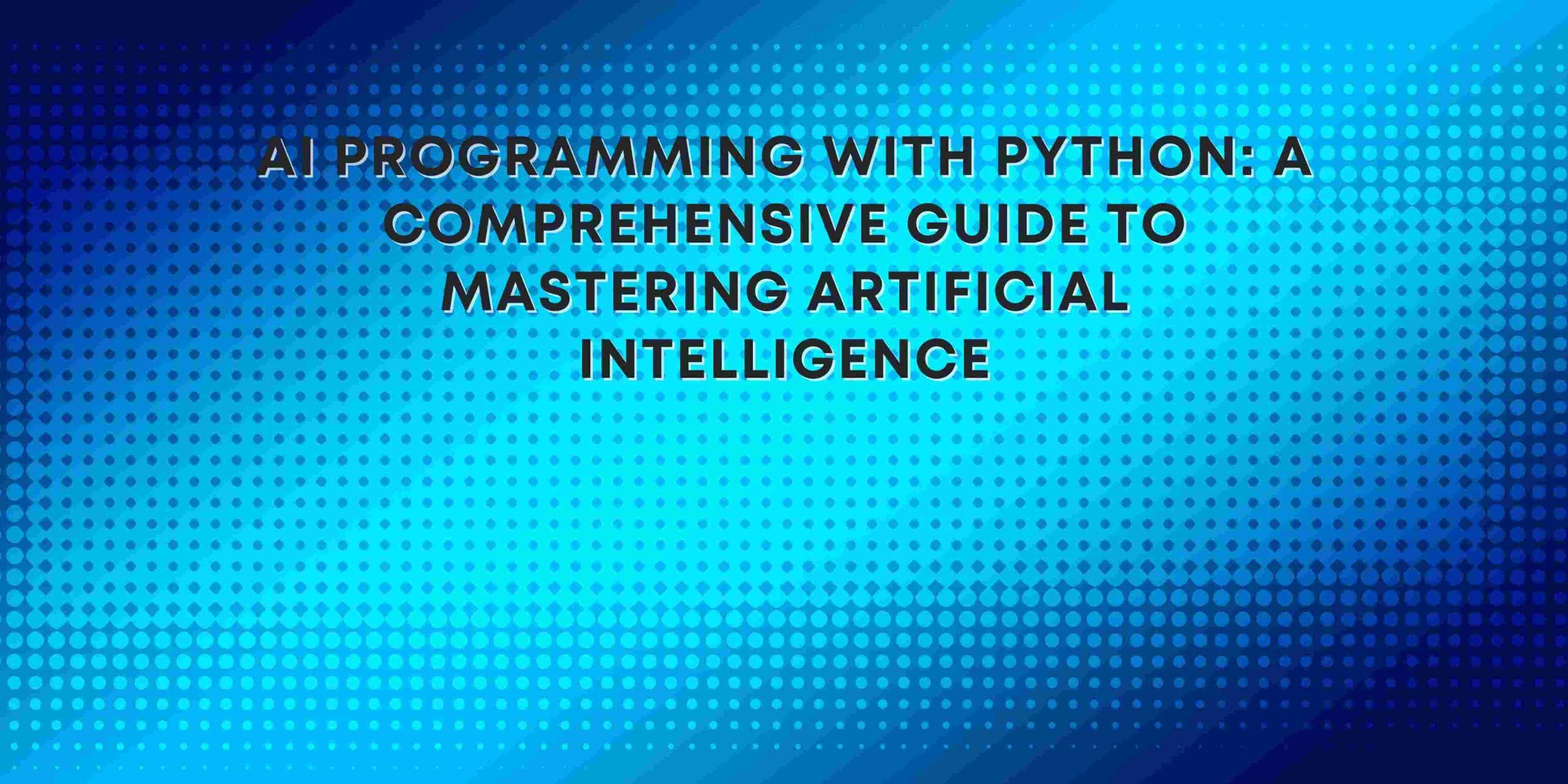Introduction
Artificial Intelligence (AI) is transforming industries and shaping the future of technology. Among various programming languages used for AI, Python stands out as the most popular and versatile. With its simplicity, extensive libraries, and supportive community, Python offers a robust platform for developing AI applications.
In this comprehensive guide, we will explore AI programming with Python, including essential concepts, tools, frameworks, and best practices. Whether you are a beginner or an experienced developer, this guide will help you harness the power of Python for AI programming.
Why Python for AI Programming?
Python’s popularity in AI programming is not accidental. Several factors make it the preferred language for AI developers.
Advantages of Using Python for AI Programming
- Ease of Learning: Python’s simple syntax and readability make it beginner-friendly.
- Extensive Libraries: Libraries like TensorFlow, PyTorch, NumPy, and scikit-learn simplify AI development.
- Versatility: Suitable for various AI tasks such as machine learning, deep learning, natural language processing (NLP), and robotics.
- Community Support: A large and active community providing tutorials, forums, and troubleshooting resources.
- Cross-Platform Compatibility: Runs seamlessly on different operating systems.
Essential Python Libraries for AI Programming
Python’s ecosystem is enriched with numerous libraries designed to support AI development. Here are some of the most widely used ones:
1. TensorFlow
- Description: An open-source library developed by Google for building machine learning and deep learning models.
- Features: Tensor computation, neural network building, distributed computing.
- Applications: Image recognition, natural language processing, autonomous driving.
2. PyTorch
- Description: A flexible deep learning framework developed by Facebook.
- Features: Dynamic computation graphs, GPU acceleration, strong debugging capabilities.
- Applications: Computer vision, NLP, reinforcement learning.
3. scikit-learn
- Description: A user-friendly library for traditional machine learning algorithms.
- Features: Classification, regression, clustering, dimensionality reduction.
- Applications: Predictive analytics, recommendation systems, data analysis.
4. Keras
- Description: A high-level neural networks API running on top of TensorFlow.
- Features: Simplified model building, fast prototyping, modularity.
- Applications: Deep learning, convolutional neural networks (CNNs), recurrent neural networks (RNNs).
5. NumPy
- Description: A fundamental library for scientific computing.
- Features: Multi-dimensional arrays, linear algebra, statistical operations.
- Applications: Data manipulation, mathematical computations, image processing.
6. OpenCV
- Description: A library for computer vision and image processing.
- Features: Object detection, face recognition, image enhancement.
- Applications: Augmented reality, autonomous vehicles, image classification.
Getting Started with AI Programming in Python
Setting up your Python environment for AI development involves installing necessary packages, libraries, and tools.
Step 1: Install Python
Ensure that Python is installed on your system. Python 3.x is recommended for AI programming.
python --version
Step 2: Install Required Libraries
Install essential libraries using pip:
pip install numpy pandas matplotlib scikit-learn tensorflow keras torch opencv-python
Step 3: Set Up Your IDE
Choose an Integrated Development Environment (IDE) such as PyCharm, VS Code, or Jupyter Notebook.
Step 4: Create a Virtual Environment (Optional)
python -m venv myenv
source myenv/bin/activate # For Linux/Mac
myenv\Scripts\activate # For Windows
AI Programming Concepts
Understanding fundamental AI concepts is crucial before diving into coding.
Machine Learning
- Definition: A subset of AI that enables machines to learn from data.
- Techniques: Supervised, unsupervised, reinforcement learning.
- Applications: Predictive analytics, recommendation systems, sentiment analysis.
Deep Learning
- Definition: A specialized subset of machine learning focused on neural networks.
- Techniques: CNNs, RNNs, GANs, Transformers.
- Applications: Image recognition, speech recognition, autonomous vehicles.
Natural Language Processing (NLP)
- Definition: Techniques for analyzing, understanding, and generating human language.
- Techniques: Tokenization, stemming, lemmatization, sentiment analysis.
- Applications: Chatbots, translation, speech recognition.
Computer Vision
- Definition: Teaching computers to interpret and process visual data.
- Techniques: Image classification, object detection, facial recognition.
- Applications: Medical imaging, autonomous driving, security systems.
Building Your First AI Model in Python
Creating a simple AI model using Python and TensorFlow.
Example: Handwritten Digit Recognition
import tensorflow as tf
from tensorflow import keras
from tensorflow.keras import layers
from sklearn.model_selection import train_test_split
import numpy as np
# Load dataset
(x_train, y_train), (x_test, y_test) = keras.datasets.mnist.load_data()
x_train, x_test = x_train / 255.0, x_test / 255.0
# Model building
model = keras.Sequential([
layers.Flatten(input_shape=(28, 28)),
layers.Dense(128, activation='relu'),
layers.Dense(10, activation='softmax')
])
model.compile(optimizer='adam',
loss='sparse_categorical_crossentropy',
metrics=['accuracy'])
# Model training
model.fit(x_train, y_train, epochs=5)
# Model evaluation
test_loss, test_acc = model.evaluate(x_test, y_test)
print(f"Test accuracy: {test_acc}")
Conclusion
Python remains the preferred choice for AI programming due to its simplicity, extensive libraries, and supportive community. As AI continues to advance, learning AI programming with Python is a valuable skill that opens doors to various opportunities in data science, machine learning, deep learning, and more.
From building simple models to creating complex neural networks, Python provides the tools and flexibility needed to excel in AI programming. Start exploring Python’s AI capabilities today and unlock the future of innovation.







